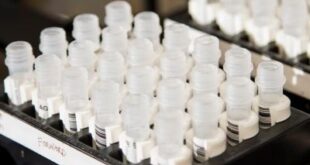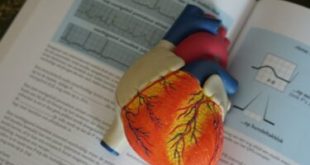The birth of a child is an occasion of celebration.The connection creates a special bond between parents and grandparents. Parents want children to lead a happy, healthy life, but unfortunately, cancer doesn’t differentiate between age groups, and it can happen to anyone at a very young age.
Although Childhood Cancer are very rare that’s why often being diagnosed late.
Childhood leukaemia, the cancer of white blood cells, is the most common malignant condition often found in children and teenagers. In this condition, abnormal white blood cells form in the bone marrow, transported quickly into the bloodstream, invading the healthy cells, and triggering various infections and other complications.
Causes of Leukaemia in Children
There are no known reasons for Leukemia in children. It is often due to inherited genetic disorders like Li-Fraumeni syndrome, Down syndrome, or Klinefelter syndrome. Another potential risk factor is the inherited immune system disorder such as ataxia-telangiectasia.
Kids with a sibling suffering from Leukemia are at high risk. Overexposure to radiation, chemotherapy, carcinogens and various chemicals by the mother during pregnancy can increase the risk of Leukemia in children. Being on immunosuppressants and organ transplants also ups the risk of Leukemia in children
Types of Childhood Leukaemia
A majority of childhood leukemia are acute, which means they happen suddenly and progress at a faster pace. Certain Leukaemia can be chronic, meaning they grow at a slower rate but are rare in children.
Acute Lymphocytic Leukemia
Also called Acute Lymphoblastic Leukemia, this starts in the early white blood cells called lymphocytes. Acute Lymphocytic Leukemia accounts for 3 out of 4 leukemia cases.
Acute Myeloid Leukemia
Acute Myelogenous Leukemia, meanwhile, starts in the myeloid cells that form white blood cells (except lymphocytes), red blood cells, and platelets.
Juvenile Myelomonocytic Leukemia (JMML)
Juvenile Myelomonocytic Leukemia is rare. It is neither chronic nor acute and is often diagnosed in children around 2.
Symptoms of Childhood Leukemia
The signs and symptoms of childhood leukemia include:
- Pale skin and severe fatigue
- Recurrent infections and fever
- Easy bruising and bleeding
- Shortness of breath, coughing, and wheezing
- Bone or joint pain
- Swelling in abdomen, face, arms, neck, groin, and collarbone
- Unintentional weight loss and appetite
- Intense headaches, seizures, problems with balance, coordination
- Changes in vision
- Sudden breakout of rashes on the skin
Diagnosis
Examination & Consultation by a clinician is must
To suspect the diagnosis following test are advised for confirming the diagnosis:
- Routine blood tests to measure the different types of cells in the blood.
- Bone marrow aspiration and biopsy are similar procedures and are often done simultaneously.
- Lumbar puncture (spinal tap) takes a sample of the cerebral spinal fluid (CSF) to look for cancer cells or tumour markers.
- An ultrasound, meanwhile, uses sound waves to create a picture of the internal organs. Patients are usually awake during an ultrasound.
- Computed tomography (CT or CAT) scan takes pictures of the insides of the body with x-rays. A computer combines them into a detailed, 3-dimensional image to show abnormalities.
- Magnetic resonance imaging (MRI) uses magnetic fields to produce detailed images of the body. An MRI can measure the tumour’s size. A special dye called a contrast medium is given before the scan to create a clearer picture.
Positron emission tomography (PET) or PET-CT scan is usually combined with a CT scan called a PET-CT scan.
Treatment for Childhood Leukemia
Advanced techniques and medications have come a long way in recent decades in treating this cancer. Before starting the child on chemotherapy, the doctor may address associated complications like infections, fever, etc.
Advanced treatments are used for treating child Leukemia. Some of the treatments include Blood and Marrow Stem Cell Transplantation, which involves replacing the unhealthy blood-forming cells with healthy ones. Blood-forming cells or blood stem cells are the immature cells that could grow into red blood cells, white blood cells, and platelets.
Then, there’s targeted therapy, a cancer treatment that uses drugs or other substances to identify and attack specific cancer cells.
Another treatment is CAR (Chimeric Antigen Receptor) T-cell therapy in which a patient’s T cells (a type of immune cell) are changed in the laboratory to make them bind to the cancer cells and kill them.
Do talk to your doctor in detail about the entire treatment protocol, cycles of chemotherapy, and life of the child after the treatment for childhood Leukemia.
Dr. Jitendra Kumar Pehalajani, Senior Consultant Medical Oncologist, HCG Cancer Centre Jaipur.
 Newspatrolling.com News cum Content Syndication Portal Online
Newspatrolling.com News cum Content Syndication Portal Online






